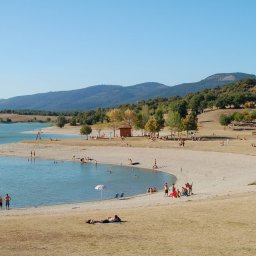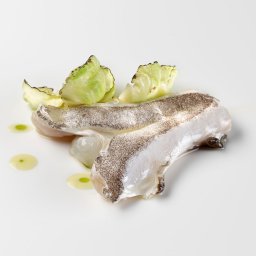Between June and September every year, shoals of sardines arrive along the Cantabrian coast. Catching them has been a local tradition since time immemorial. Seines are used for fishing sardines in the bay while rowing boats and trawlers are used further out to sea. The waft of grilled sardines and charcoal fills the air in ports all over the Basque Country in summer. Plentiful, succulent, healthy, affordable, and fresh, try them with a hunk of bread and a glass of deliciously refreshing, white Txakoli. You’ll be back for more!
The sardines that are grilled all over the Basque Country are actually European pilchards (sardina pilchardus pilchardus). Shoals of them can be found in the Cantabrian Sea. The sardina pilchardus sardina, on the other hand, is a different variety and lives in the Mediterranean Sea.
A highly sociable, oily fish which rarely exceeds 13 centimetres in length, the local variety spend their lives fleeing from predatory mackerel and tuna. Caught by the inshore fishing fleet, the fish is practically alive when it reaches the port. Almost entirely black in colour, the sardines have silver stripes along the flank and a gold mark on the head.
Once the catch has been unloaded, the fish is auctioned and sent off to markets, fish shops and restaurants. No summer festival or weekend at the seaside would be complete without a few sardines, expertly grilled on charcoal or a griddle. They are normally served by the dozen or half-dozen and are very affordable. They come with a simple squeeze of lemon and some sea salt.

They are normally eaten sitting down at a table or standing at the bar. Although cutlery can be used, it isn’t common. Once the fish has cooled down, most people pick them up with their hands and eat them off the bone, taking care not to bite into the bitter-tasting innards. The flesh practically comes away in one piece. Use plenty of paper serviettes, order some bread and a glass of Txakoli or young, red – preferably carbonically-macerated – Rioja Alavesa wine, and enjoy the sun, breeze, ripple of the ocean, and the taste and texture of the sardines.

As the season progresses, the fish grow bigger and oilier. It’s a matter of taste. Some people prefer smaller, anchovy-sized sardines, while others prefer them the size of a small mackerel. According to the experts, the best fish are caught somewhere between the middle of July and the middle of August. While a fifth of the weight of every sardine is protein, the fat content varies according to the time of year. Sardines also contain mineral salts and vitamins A, B, and C. Like all oily fish, they are rich in polyunsaturated and Omega 3 fats which are good for the heart and circulatory system.

Sardines are sold fresh or canned in oil, pickling brine or in a spicy tomato sauce. They are readily available in supermarkets and make great souvenirs. The larger sardines used to be sold, salted and packed, in large, round, flat wooden boxes or ‘panderetas’. Known as ‘sardina vieja’ [old sardines] they were eaten with a little oil or cooked directly on hot charcoal, without the grill, and seasoned afterwards.
Since you’re here, why don’t you find an ‘Asador’ and order some grilled sardines? Try eating them with your fingers, you’ll like it.
















